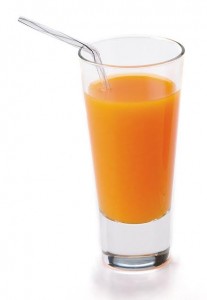Jump-Start Your Juice – Enhancing Beverages With Oat Beta Glucan

By Heidi Cullip, Marketing Manager, EMEA, Innovation & Commercial Development, Tate & Lyle
From energy-packed juices to meal-replacement smoothies, functional beverages are increasingly becoming part of a healthy lifestyle. Not only do they offer a variety of nutritional benefits including digestive health, satiety and cholesterol management, functional beverages align with trends for convenience and portability.1
As manufacturers launch new products to meet demand in this category, fibre is rising to the top of their ingredient lists. In fact, there was a 56% increase in beverages launched containing fibre globally from 2010 to 2014.2 And while there are many fibre ingredients that may be appropriate for this category, oat beta glucan is an ideal option because of the many nutritional benefits it provides.
Oat beta glucan helps maintain healthy blood cholesterol and promotes healthy post-prandial glycaemic response. It can also support gastrointestinal health and assist in weight management through calorie and fat reduction. Emerging data also indicates that intake of oat beta glucan may help promote satiety.3
 However, not all oat beta glucan ingredients work well in beverage applications. With taste is a main purchase driver for many consumers, it is imperative that manufacturers choose an oat beta glucan that doesn’t impact final taste and texture of their beverage. This can be achieved by keeping the following in mind during testing:
However, not all oat beta glucan ingredients work well in beverage applications. With taste is a main purchase driver for many consumers, it is imperative that manufacturers choose an oat beta glucan that doesn’t impact final taste and texture of their beverage. This can be achieved by keeping the following in mind during testing:
Claims and Purity
Before adding oat beta glucan to a beverage, manufacturers should consider the quantity needed to qualify for specific health benefit claims. In order to reach the desired quantity, concentration will be calculated based on serving size. The smaller the serving size, the more concentrated the oat beta glucan, and the thicker the drink. A higher-purity beta glucan won’t require as much of the ingredient to be added, which may alleviate “thickness” and ultimately provide a cleaner taste and texture.
Solubility and Stability
For beverage applications, it is also extremely important to consider solubility. The beta glucan ingredient selected should be highly soluble, with clean taste and smooth texture, with no grittiness. In addition to solubility, manufacturers should look for a beta glucan that is acid- and heat-stable to allow for easy integration into beverage formulations.
Viscosity
 Oat beta glucans provide viscosity, so manufacturers should consider final viscosity desired in the beverage and take this into account when using beta glucan ingredients at claim levels. Beta glucan works well in a smoothie because consumers expect a thicker mouthfeel from this type of drink and, ideally, formulating with oat beta glucan should yield a clean taste and rich mouthfeel.
Oat beta glucans provide viscosity, so manufacturers should consider final viscosity desired in the beverage and take this into account when using beta glucan ingredients at claim levels. Beta glucan works well in a smoothie because consumers expect a thicker mouthfeel from this type of drink and, ideally, formulating with oat beta glucan should yield a clean taste and rich mouthfeel.
Formulating with oat beta glucan can be an easy way to add a variety of nutritional claims to functional beverages, but all the claims in the world won’t sell a product that doesn’t taste good. By working side-by-side with a supplier to carefully choose the right ingredient based on claims, purity, solubility, stability and viscosity, manufacturers can achieve the best of both worlds – better nutrition and great taste.
To learn more about Tate & Lyle’s fibre portfolio visit www.tateandlylefibres.com.
1 Euromonitor Passport; Corporate Strategies in Health and Wellness, December 2014.
2 Innova Market Insights, 2015.
3 EFSA Panel on Dietetic Products, Nutrition and Allergies (NDA); Scientific Opinion on the substantiation of health claims related to beta-glucans from oats and barley and maintenance of normal blood LDL-cholesterol concentrations (ID 1236, 1299), increase in satiety leading to a reduction in energy intake (ID 851, 852), reduction of post-prandial glycaemic responses (ID 821, 824), and “digestive function” (ID 850) pursuant to Article 13(1) of Regulation (EC) No 1924/2006. EFSA Journal. 2011;9(6):2207.


































